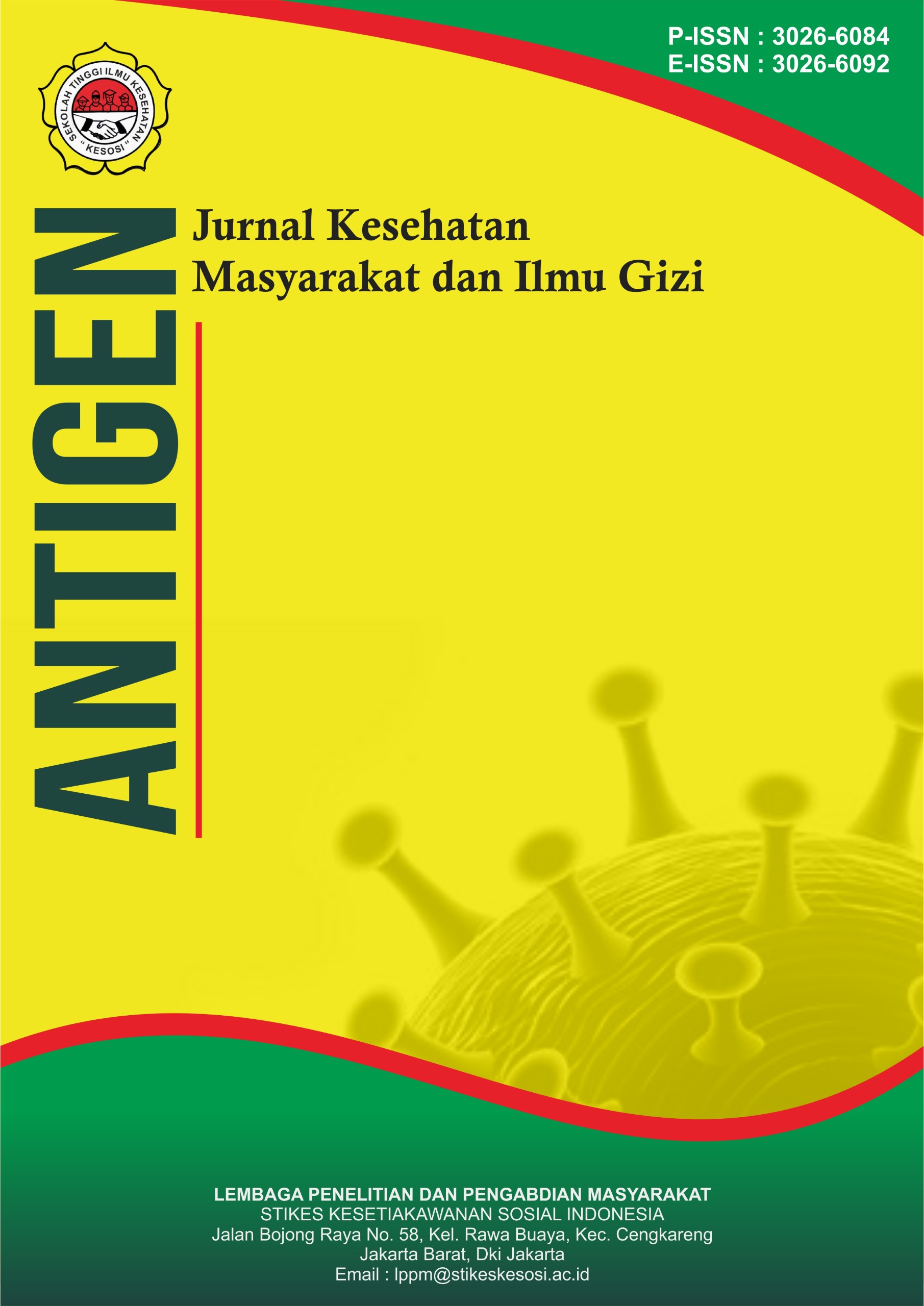Analisis Kadar Protein dengan Metode Lowry pada Berbagai Jenis Produk Susu yang Beredar di Lingkungan Universitas Muhammadiyah Surakarta
DOI:
https://doi.org/10.57213/antigen.v2i3.277Keywords:
Cow’s milk, goat’s milk, protein levelAbstract
The milk contains bioactive compounds that are beneficial for health. One of bioactive compounds contained in the milk is protein nutrient. Examination of protein levels in foodstuffs can be tested using the Lowry method that considered more sensitive. The purpose of this study was to analyzed the protein levels of various types of dairy products. This research included laboratory research with samples of 5 types of dairy products were sweetened condensed milk with vanilla flavor, fresh cow's milk, vanilla flavored skim milk flour, vanilla flavored full cream milk flour, and plain goat's milk flour. Protein content of samples were tested using the Lowry method with 3 repetitions each. The collected data were tested using One way Anova and Tukey HSD. The results of the examination of protein levels in the sample showed that the highest protein content was vanilla flavored full cream milk flour (8.43%). Meanwhile, the lowest protein content were fresh cow's milk and vanilla flavored sweetened condensed milk, which were 2.86 and 2.87%, respectively. The average protein content in dairy products in the Universitas Muhammadiyah Surakarta was 5.39%. There are significant differences between various types of dairy products on protein content.
References
Badan POM. (2019). Pedoman Perhitungan Karakteristik Dasar Kategori Pangan. Jakarta: Direktorat Standar Pangan Olahan, Deputi Bidang Pengawasan Pangan Olahan, Badan Pengawas Obat dan Makanan.
Becker, J. M., Caldwell, G. A., & Zachgo, E. A. (1996). Exercise 13 - Protein Assays. In J. M. Becker, G. A. Caldwell, & E. A. Zachgo (Eds.), Biotechnology (Second Edition) (pp. 119–124). San Diego: Academic Press. doi:https://doi.org/10.1016/B978-012084562-0/50069-2
Christi, R. F., & Rohayati, T. (2017). Kadar Protein, Laktosa, dan Bahan Kering Tanpa Lemak Susu Kambing Peranakan Ettawa yang Diberi Konsentrat Terfermentasi. Jurnal Ilmu Peternakan, 1(2).
Díaz-Castro, J., Hijano, S., Alférez, M. J. M., López-Aliaga, I., Nestares, T., López-Frías, M., & Campos, M. S. (2010). Goat milk consumption protects DNA against damage induced by chronic iron overload in anaemic rats. International Dairy Journal, 20(7), 495–499. doi:https://doi.org/10.1016/j.idairyj.2010.01.006
Dzarnisa, D., Intan Novita, C., Yurliasni, Y., Handayani, T., & Anggaini, S. (2019). Analisa Kualitas Kimia dan Mikrobiologi Susu Kambing Peranakan Etawa dengan Pemberian Pakan yang Ditambahkan Tepung Kulit Manggis pada Persentase yang Berbeda. Jurnal Ilmu Dan Teknologi Hasil Ternak, 19(1), 30–37. doi:10.21776/ub.jitek.2019.014.01.4
Kabwanga, I. T., & Altin, C. (2017). Nutritional Benefits of Goats Milk, Major Components and Medicinal Value. Grin Publishing.
Korhonen, H., & Pihlanto, A. (2007). Bioactive Peptides from Food Proteins. In Handbook of Food Products Manufacturing (pp. 1–37). Wiley. doi:10.1002/9780470113554.ch46
Lean, M. E. (2013). Ilmu Pangan, Gizi dan Kesehatan. Yogyakarta: Pustaka Pelajar.
Muñoz-Salinas, F., Andrade-Montemayor, H. M., De la Torre-Carbot, K., Duarte-Vázquez, M. Á., & Silva-Jarquin, J. C. (2022). Comparative Analysis of the Protein Composition of Goat Milk from French Alpine, Nubian, and Creole Breeds and Holstein Friesian Cow Milk: Implications for Early Infant Nutrition. Animals, 12(17), 2236. doi:10.3390/ani12172236
Nugraheni, M.A., Indarto, D. and Pamungkasari, E.P., (2024). Uji Organoleptik Jeli dengan Substitusi Tepung Biji Salak (Salacca edulis Reinw.) sebagai Makanan Tambahan untuk Anemia Defisiensi Besi. Jurnal Pembaruan Kesehatan Indonesia, 1(1), pp.64-71.
Naufalina, M. D., Sari, F. K., & Mahmudah, N. A. (2020). Pedoman Praktis Analisis Zat Gizi. Kediri: Penerbit Muara Books.
Park, Y. W. (2009). Bioactive Components in Milk and Dairy Products. (Y. W. Park, Ed.). Wiley. doi:10.1002/9780813821504
Patel, A. H., Sharma, H. P., & Kratika, K. (2020). Milk Proteins: An Overview. Foodagrispectrum.
Pihlanto, A., & Korhonen, H. (2003). Bioactive peptides and proteins (pp. 175–276). doi:10.1016/S1043-4526(03)47004-6
Shen, C.-H. (2019). Diagnostic Molecular Biology. Elsevier. doi:10.1016/C2013-0-19156-8
Sinthary, V., & Arief, M. J. (2023). Review: Peptida Bioaktif Kasein Susu Kambing sebagai Sumber Antimikroba dan Antioksidan. Jurnal Sains Dan Kesehatan, 5(3), 444–457. doi:10.25026/jsk.v5i3.1895.
Wibawani, N.S.H., Oppusunggu, R. and Bakara, T.L., 2023. Pengaruh Penambahan Tepung Biji Durian Terhadap Daya Terima Mie Basah Tepung Biji Durian. Media Gizi Ilmiah Indonesia, 1(1), pp.1-9.
Downloads
Published
Issue
Section
License
Copyright (c) 2024 Antigen : Jurnal Kesehatan Masyarakat dan Ilmu Gizi

This work is licensed under a Creative Commons Attribution-ShareAlike 4.0 International License.






